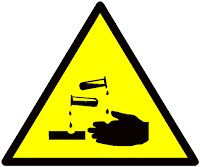work with smart home systems that would provide memory cues to help residents get back
on track when they are unsure of what to do next.
Maureen Schmitter-Edgecombe, professor of psychology, is part of WSU’s Center for
Advanced Studies in Adaptive Systems (CASAS). Her team of graduate students is working
with colleagues in electrical engineering and computer science to develop technology
to help people remember to do tasks like taking their medicine, preparing meals and
performing physical therapy exercises.
Schmitter-Edgecombe and Diane Cook, professor of electrical engineering and computer
science, have been testing and refining the WSU smart home for the last seven years.
It uses sensors on the walls, doors and various household objects to help monitor,
predict and ultimately improve quality of life, especially in care of the elderly.
The system predicts when cognitively impaired people are between activities and
may need a prompt to perform a new task. It comes in a box and can be installed in
an apartment or home relatively easily. It consists of roughly 30 infrared, motion
and vibration sensors that look at patterns of behaviors – such as whether a certain
activity has happened before, when it took place and how long it lasted – and then
deduce what’s going on.
Over time, the system uses this information to determine when the home’s inhabitant
has completed a specified task and might need a prompt to perform a new one.
To test their system, the research team collected data from two experiments. One was
conducted at the smart home on the WSU Pullman campus. The other took place at a
retirement community in Seattle where smart homes have been installed in eight
apartments.
For the second experiment, each of the apartments housed a single older adult who was
asked to go about daily routines while the wireless sensors collected data. Every day,
the researchers analyzed three hours of data starting when the participants first
awoke. The system was able to accurately predict periods of transition between
activities 80 percent of the time.
“The smart home is able to recognize the short period of time after visitors leave
and before the resident starts a new activity,” said Kayela Robertson, a psychology
postdoctoral candidate working on the project. “We are starting to develop a tablet-
or smart phone-based application that integrates with the smart home to provide a
prompt to perform a new task during this transition.”
For example, the smart home used data from sensors on the front door and in the living
room to determine when visitors arrived, how long they stayed and when they left.
The goal is to develop an easy-to-use and portable tool that would provide reminders
to perform a number of important activities.
The technology could also provide smart home occupants with a list of activities
they’ve done throughout the course of the day and give healthcare providers and loved
ones a better idea of how their aging patients, parents or other family members are
doing, whether they live nearby or in another state.
Read the full article: https://news.wsu.edu/2015/12/15/device-prompts-elderly-to-remember-next-task/

























